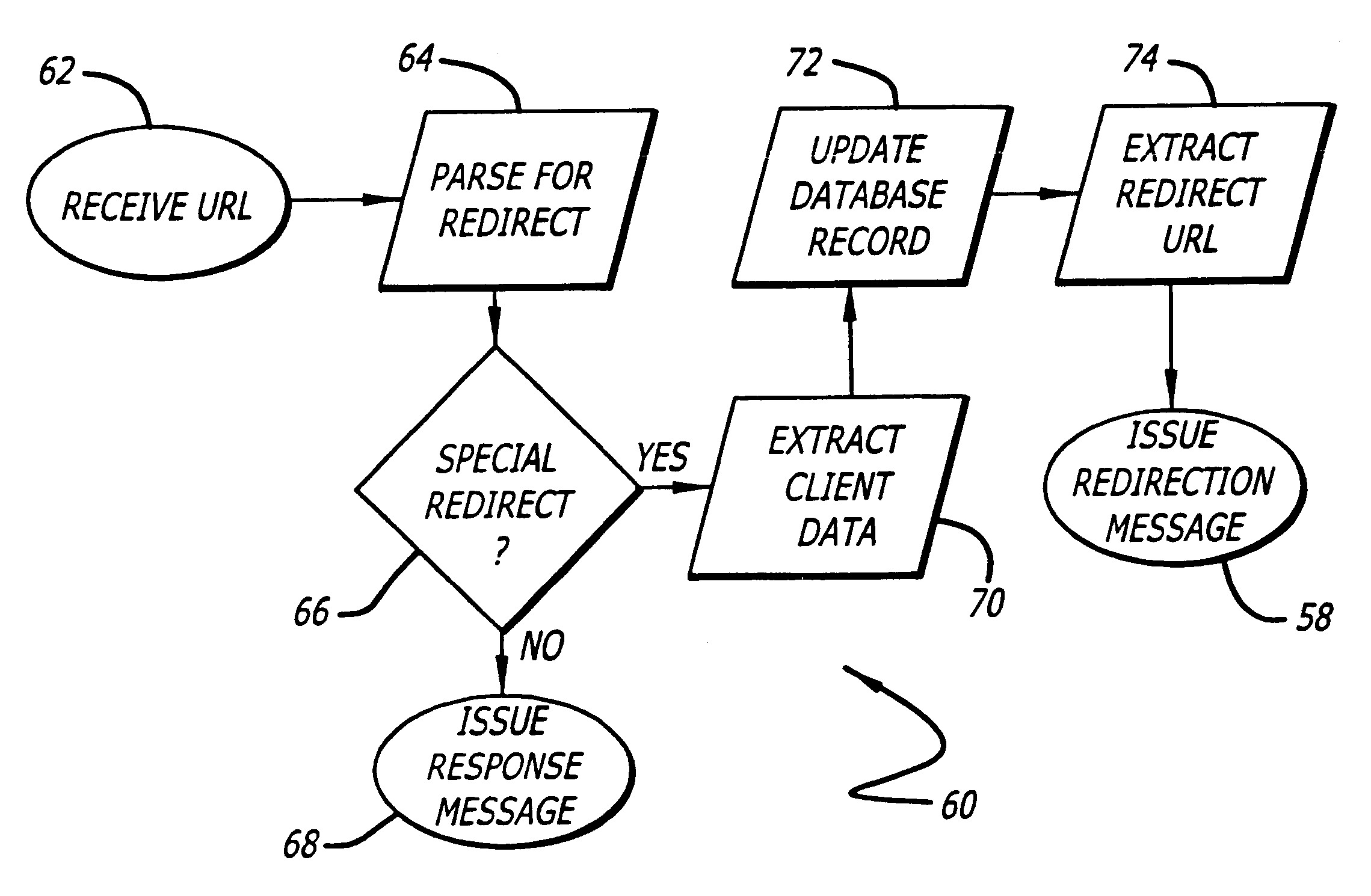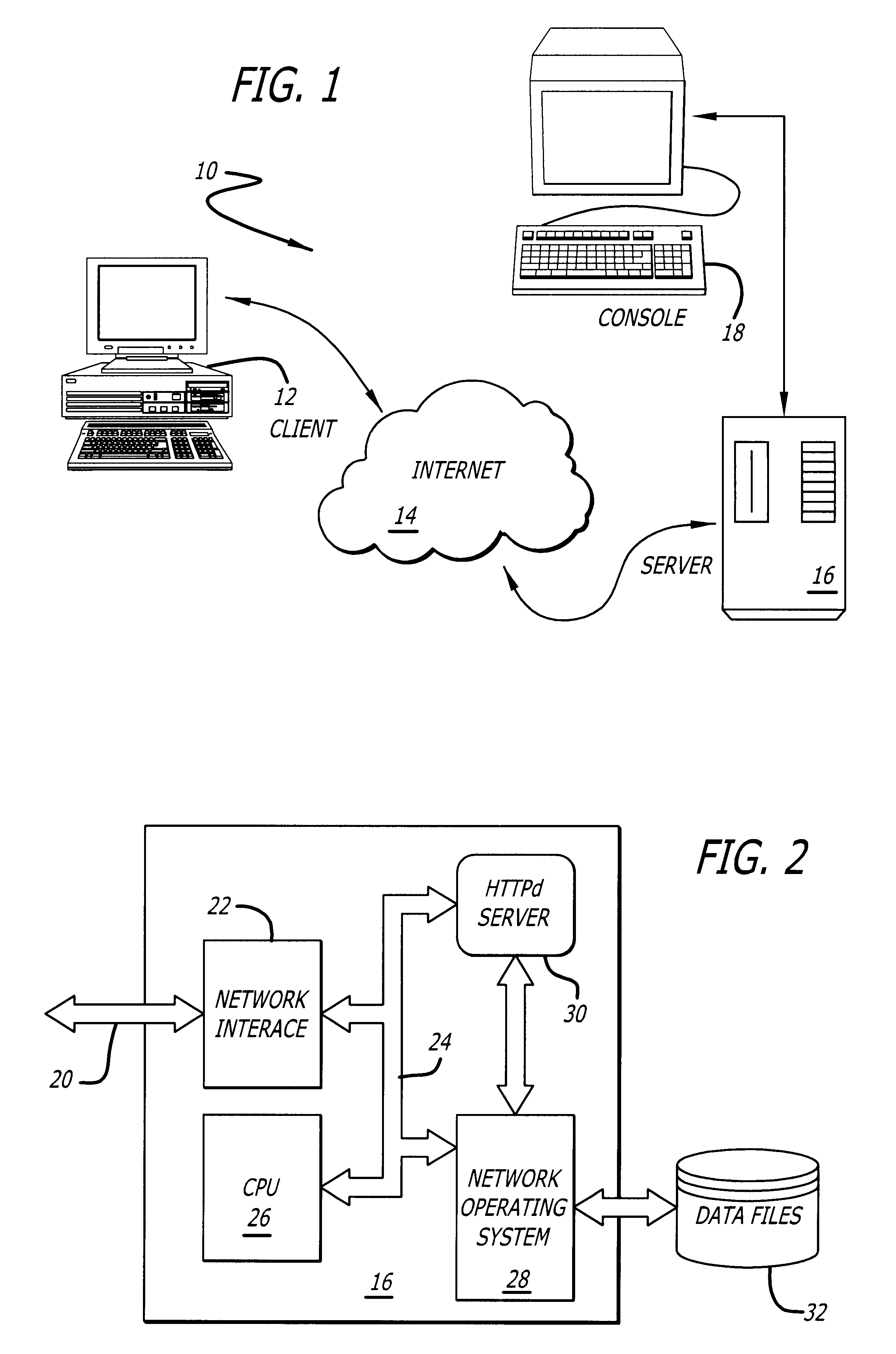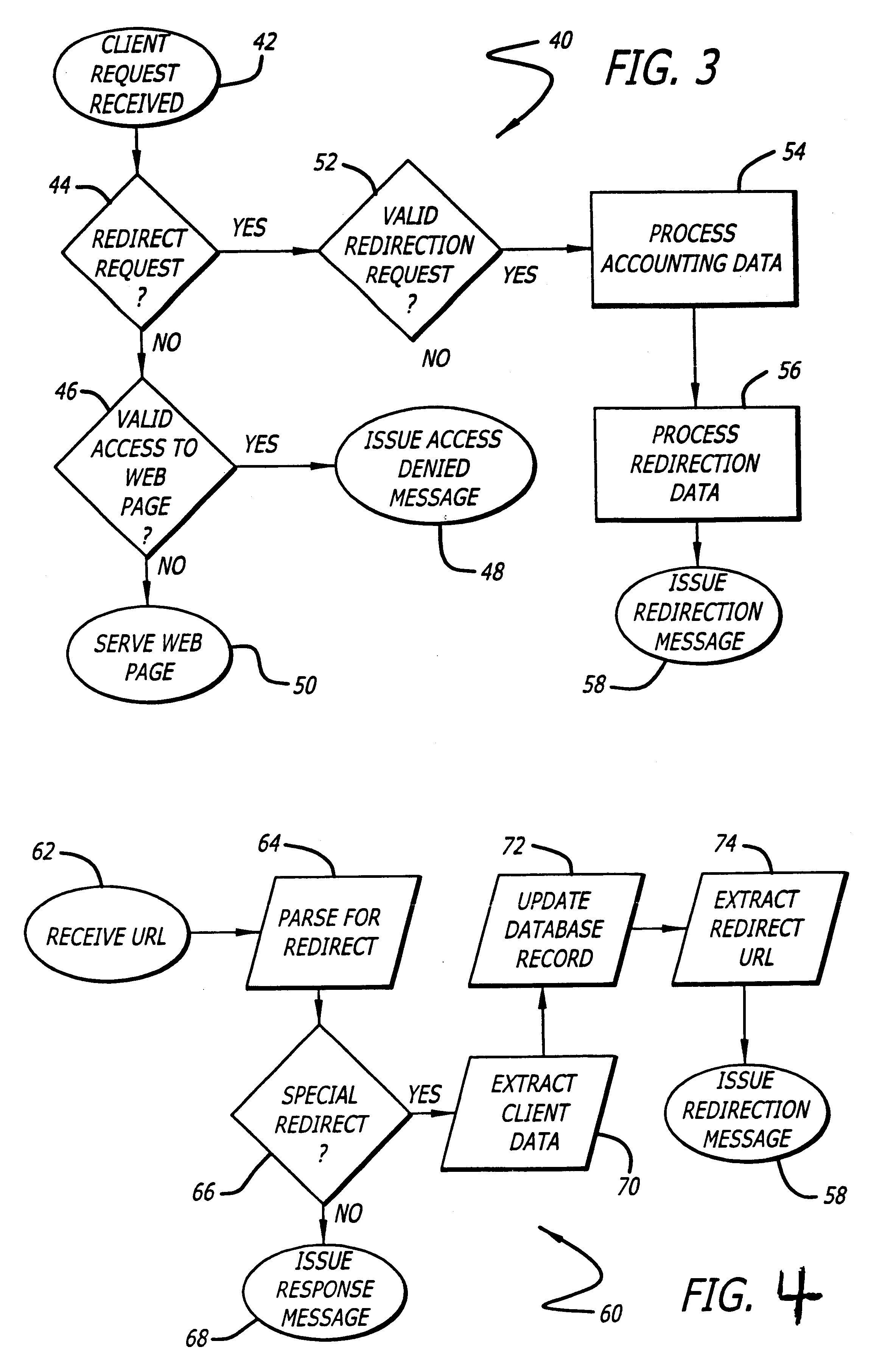Method and apparatus for redirection of server external hyper-link references
a redirection protocol and hyper-link technology, applied in the field of network information server systems, can solve the problems of obtaining direct reference information, unable to centrally enforce or even regionally enforce the web, and unable to search for information or other resources provided by individual http servers, so as to minimize the resulting latency, minimize the cpu and disk intensive load on the web server computer system, and minimize the latency effect of latency
- Summary
- Abstract
- Description
- Claims
- Application Information
AI Technical Summary
Benefits of technology
Problems solved by technology
Method used
Image
Examples
Embodiment Construction
A typical environment 10 utilizing the Internet for network services is shown in FIG. 1. Client computer system 12 is coupled directly or through an Internet service provider (ISP) to the Internet 14. By logical reference via a uniform resource locator, a corresponding Internet server system 16, 18 may be accessed. A generally closed hypertext transfer protocol transaction is conducted between a client browser application executing on the client system 12 and an HTTPd server application executing on the server system 16. In a preferred embodiment of the present invention, the server system 16 represents an Internet Business Service (IBS) that supports or serves web pages that embed hyper-link references to other HTTPd server systems coupled to the Internet 14 and that are at least logically external to the server system 16.
Within this general framework, the present invention enables the tracking of the selection of embedded hyper-link references by client system 12. That is, an embe...
PUM
 Login to View More
Login to View More Abstract
Description
Claims
Application Information
 Login to View More
Login to View More - R&D
- Intellectual Property
- Life Sciences
- Materials
- Tech Scout
- Unparalleled Data Quality
- Higher Quality Content
- 60% Fewer Hallucinations
Browse by: Latest US Patents, China's latest patents, Technical Efficacy Thesaurus, Application Domain, Technology Topic, Popular Technical Reports.
© 2025 PatSnap. All rights reserved.Legal|Privacy policy|Modern Slavery Act Transparency Statement|Sitemap|About US| Contact US: help@patsnap.com



